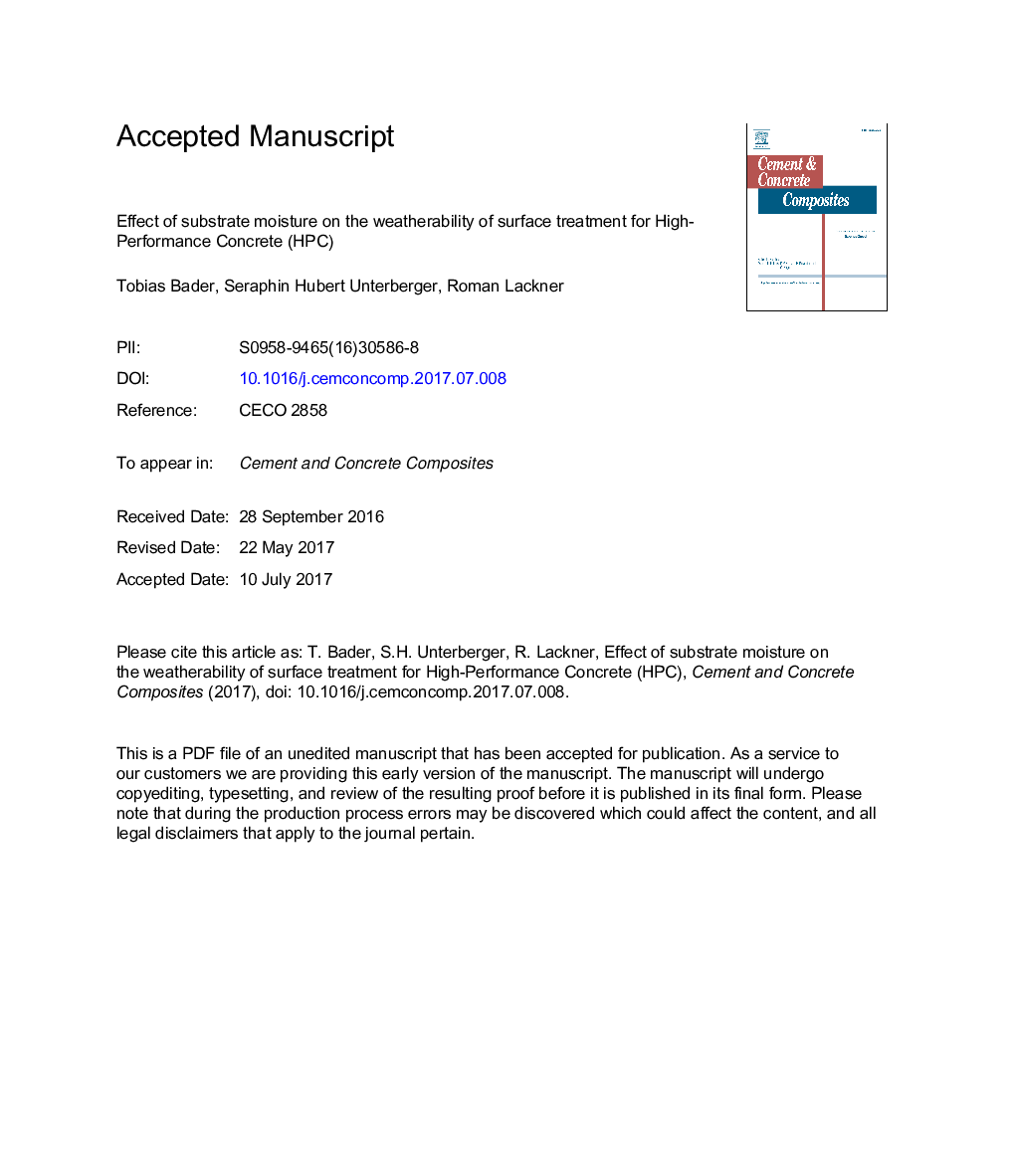| Article ID | Journal | Published Year | Pages | File Type |
|---|---|---|---|---|
| 5436801 | Cement and Concrete Composites | 2017 | 24 Pages |
Abstract
Surface treatments are applied to protect concrete from the penetration of water with the purpose of retarding degradation and/or aesthetic deterioration. Several studies have shown that the penetration behaviour of surface treatments for ordinary concrete depends on the substrate moisture content which in turn influences its service life. The role of moisture content in case of surface treatments applied to High-Performance Concrete (HPC) seems to be questionable due to the reduced near-surface permeability and diminished capillary water uptake of HPC. In this paper, the effect of different moisture contents (4, 6, 8Â wt.-%) representing dry, medium and wet conditions on the penetration behaviour and the subsequent weatherability of acrylic resin coating are evaluated by means of artificial weathering over a period of 2160 h. Based on the obtained results, the penetration of the used acrylic resin is considered to be hindered by a filter effect due to the reduced pore size in the near-surface area of HPC. Thus, the aqueous dispersion of acrylic resin is separated into solvent (penetrating into the HPC) and active agent (remaining on its surface). With ongoing artificial weathering incremental colour change (brightening) and delamination of the surface treatment are observed, with the extent being more pronounced for specimens with moisture contents of 6 and 8Â wt.-%. The observed differences in weathering are considered to be the result of differences in the moisture absorption of the acrylic film. This in turn is mostly related to the saponification of the acrylic resin resulting in the formation of hygroscopic carboxylic acid salts due to the alkaline environment of HPC. Thus, moisture contents of 6 and 8Â wt.-% are suspected to facilitate the degradation of the coating by the alkaline pore solution, which increases the extent of saponification making the film more prone to the absorption of moisture. For 4Â wt.-% moisture content, on the other hand, the extent of saponification is marginal resulting in only slight changes in colour and a minor degree of delamination.
Keywords
Related Topics
Physical Sciences and Engineering
Engineering
Industrial and Manufacturing Engineering
Authors
Tobias Bader, Seraphin Hubert Unterberger, Roman Lackner,
